Investment thesis
Last summer I was considering buying a new car and an electric vehicle [EV] was a tempting option due to its more attractive total ownership cost. However, at the end of the day, I bought an internal combustion engine [ICE] vehicle due to the uncertainty about the longevity of an EV’s battery. It appears that the solid-state battery technology developed by the company named QuantumScape (NYSE:QS) might decrease the level of uncertainty regarding the longevity of EV batteries. Apart from the battery longevity, the technology potentially has other advantages over batteries which are currently deployed in the EV industry. However, the commercialization looks far from now as QS is yet to generate revenue and Wall Street analysts do not expect the company to generate profits in the foreseeable future.
I could have said that QS is an interesting investing opportunity in case its valuation was at least comparable with its book value, but the current market cap is two times higher than the company’s net assets. Moreover, its $2.5 billion market cap looks ridiculous when we bring Tesla’s (TSLA) valuation in 2011 to the context. Tesla had comparable valuation when it already generated $200 million annual revenue and its EPS was much closer to zero compared to QS’s current bottom line.
Of course, solid-state battery technology looks like a disruptor, but the level of uncertainty regarding timing of its commercialization is extremely high. The stock is sliding, and its sky-high valuation suggests that there is still room for the share price to drop further. I would consider buying QS if its market cap drops by additional 50%, but at the moment it looks like an apparent “Strong Sell” to me.
Company information
QuantumScape is a company developing next-generation solid-state lithium battery technology for EVs and other applications. According to some sources, solid-state batteries have numerous advantages over lithium-ion batteries, which are currently deployed by the EV industry.

vajiramias.com
Volkswagen (OTCPK:VWAGY) partners with QS since 2012. According to the latest 10-K report, the company was founded in 2010 and went public in 2020. The company’s fiscal year ends on December 31, and it conducts its business through a sole operating segment.
Financials and business
There is not much to discuss from the financial perspective. The technology is not commercialized, which means that the company is yet to generate revenue.
According to the company’s cash flow statement, it burned more than $200 million in cash from operations in each of the last two fiscal years. Raising debt when a company does not generate sales is barely possible, which means that issuing new shares is the only option to finance the company’s operations. This is not good for investors, as it dilutes shareholders’ value. Since consensus estimates forecast the company’s annual revenue to surpass $200 million [operating cash burn rate] not earlier than FY 2027, it is extremely likely that shareholders will see much more dilution in the next couple of years.
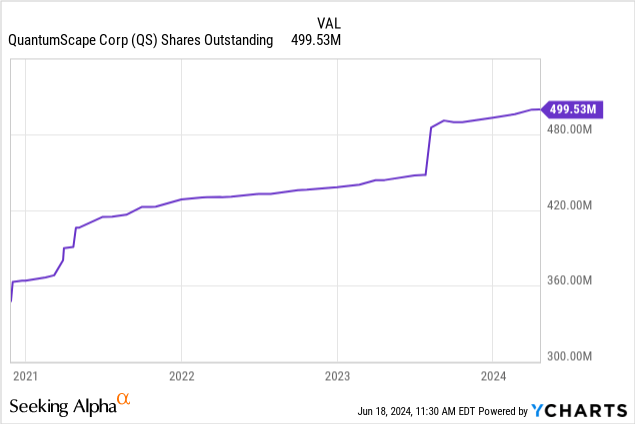
The good point is that the company’s financial position is decent, with around $900 million in net cash. On the other hand, the business requires exceptional capital allocation from the management because QS will need substantial investments in CAPEX to ramp up production once the technology commercializes. The company invested more than $300 million in CAPEX over the last three years.
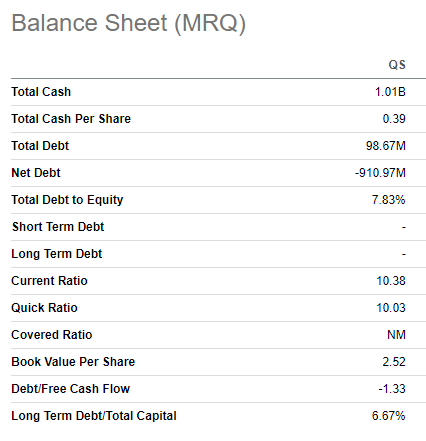
Seeking Alpha
The industry where QS operates is promising. A robust secular shift to EVs is expected to help the industry to deliver a 25.1% CAGR over the next decade, a strong tailwind for a company like QS. On the other hand, it is important to understand that the solid-state batteries technology is still scratching the surface and not commercialized. Moreover, it can take years before optimal supply chains are built around the brand-new industry. Raw materials sourcing will also highly likely be a substantial problem to solve before the industry is able to ramp up. That said, the level of uncertainty around the technology’s commercialization timing is extremely high.
Despite uncertainty around the technology’s commercialization, the industry is already crowded. Apart from QS, there is another public U.S. company involved in the race, called Solid Power (SLDP). SLDP has strategic partnerships with prominent automotive players like Ford (F) and BMW (OTCPK:BMWYY). Tesla does not classify its battery enhancements as “solid-state”, but this massive EV player is also a formidable potential competitor to QS.
The industry is evolving rapidly outside the U.S. as well. Toyota (TM) pours billions into next-gen batteries. Mercedes-Benz (OTCPK:MBGAF) partners with Taiwanese solid-state battery startup called ProLogium. In South Korea, developing next-gen batteries is above corporate level, as it was the country’s government’s decision to spend $15 billion on R&D to develop more efficient batteries. China also has massive ambitions to develop next-gen EV batteries. That said, the industry which is still not commercialized already looks extremely competitive.
To conclude this part, there are no apparent strategic strengths behind QS’s business apart from its partnership with Volkswagen. I could have called industry tailwinds as a potential catalyst, but it is extremely crowded with numerous prominent players willing to pour billions into developing next-gen batteries.
Valuation
QS declined by 31% over the last twelve months. A major part of this was recorded in 2024 since QS delivered a 26% YTD share price decline. There is almost nothing to discuss from the valuation ratios perspective because QS does not generate revenue yet. The only ratios available are the TTM and forward price-to-book ratios, which look elevated. I consider these levels high because paying two times the book value of the company’s net assets look expensive for the extreme level of uncertainty QS offers to investors.

Seeking Alpha
I cannot simulate the DCF model for QS because consensus estimates forecast the adjusted EPS to become positive, not earlier than 2030, which is six years from today. Forecasting that far means extremely high level of uncertainty and the DCF model relying on this assumption will be extremely not reliable, in my opinion.
To highlight QS’s overvaluation, I need some reliable context. The company’s current market cap is around $2.5 billion. Despite loads of controversy around Tesla’s current valuation and Elon Musk’s endeavors, I think that it is difficult to object to the fact that Tesla is one of the biggest disruptors in the 21st century. Therefore, I want to show readers what Tesla’s financials looked like when it had about the same valuation as QS has at the moment.
As shown in the below picture, Tesla already generated $200 million annual revenue and its adjusted EPS was moving closer to zero. That said, Tesla had almost the same market cap when it was already obvious that EV technology is not only disruptive but also commercially viable. In this context, QS’s current multibillion valuation with zero revenue and far lower EPS looks ridiculous. Let us also not forget the difference in addressable markets of these two companies. Global automotive market is a multi-trillion industry, while batteries is just a crucial but still auxiliary industry, with the size still below $100 billion.
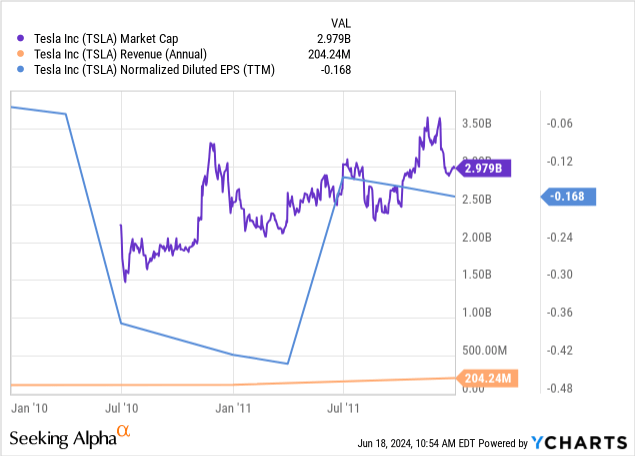
Risks to my bearish thesis
Despite the extreme uncertainty about the economic viability of solid-state battery technology, I cannot deny that various scientists suggest that it is indeed a much more efficient solution than batteries which are deployed at the moment. Therefore, the technology is disruptive, and any disruptor can potentially fly. Even Tesla faced significant going concern risks in its early years, but it eventually ended up becoming by far the largest automotive company by market capitalization. That said, the possibility that QS can indeed change the world with its new battery technology is above zero.
Moreover, we should not forget that QS has a solid strategic strength in the form of its long-lasting strategic partnership with Volkswagen, which is one of the largest car manufacturers in the world by volume. Volkswagen sells around 9 million cars per year, and expects EV models to reach 50%-70% of its total deliveries by the year 2030. Therefore, QS has a massive potential client for its solid-state batteries, which will sell around 5 million EVs per year by 2030.
Apart from fundamental reasons, it is also important to recall that stock’s price is driven by the supply-demand equilibrium. The technology is disruptive and can potentially fly. There are not so many public solid-state battery companies in the U.S. stock market, as I understand. Therefore, the demand for QS stock might be elevated just because there are almost no alternatives to get exposure to the U.S. solid-state battery exposed company.
Bottom line
To conclude, QS is a “Strong Sell”. It is still too early to say that solid-state battery technology is economically viable and even if it is, the space already looks extremely crowded with several major automotive companies already in the technological race. Buying at a $2.5 billion valuation a company with zero revenue and no certainty regarding the economic viability of the business looks like a big overprice.
Editor’s Note: This article discusses one or more securities that do not trade on a major U.S. exchange. Please be aware of the risks associated with these stocks.
Read the full article here



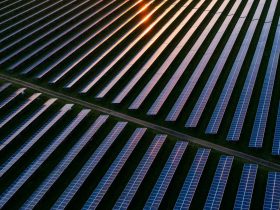

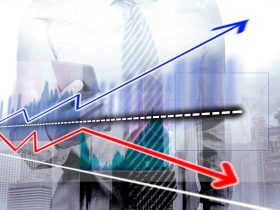

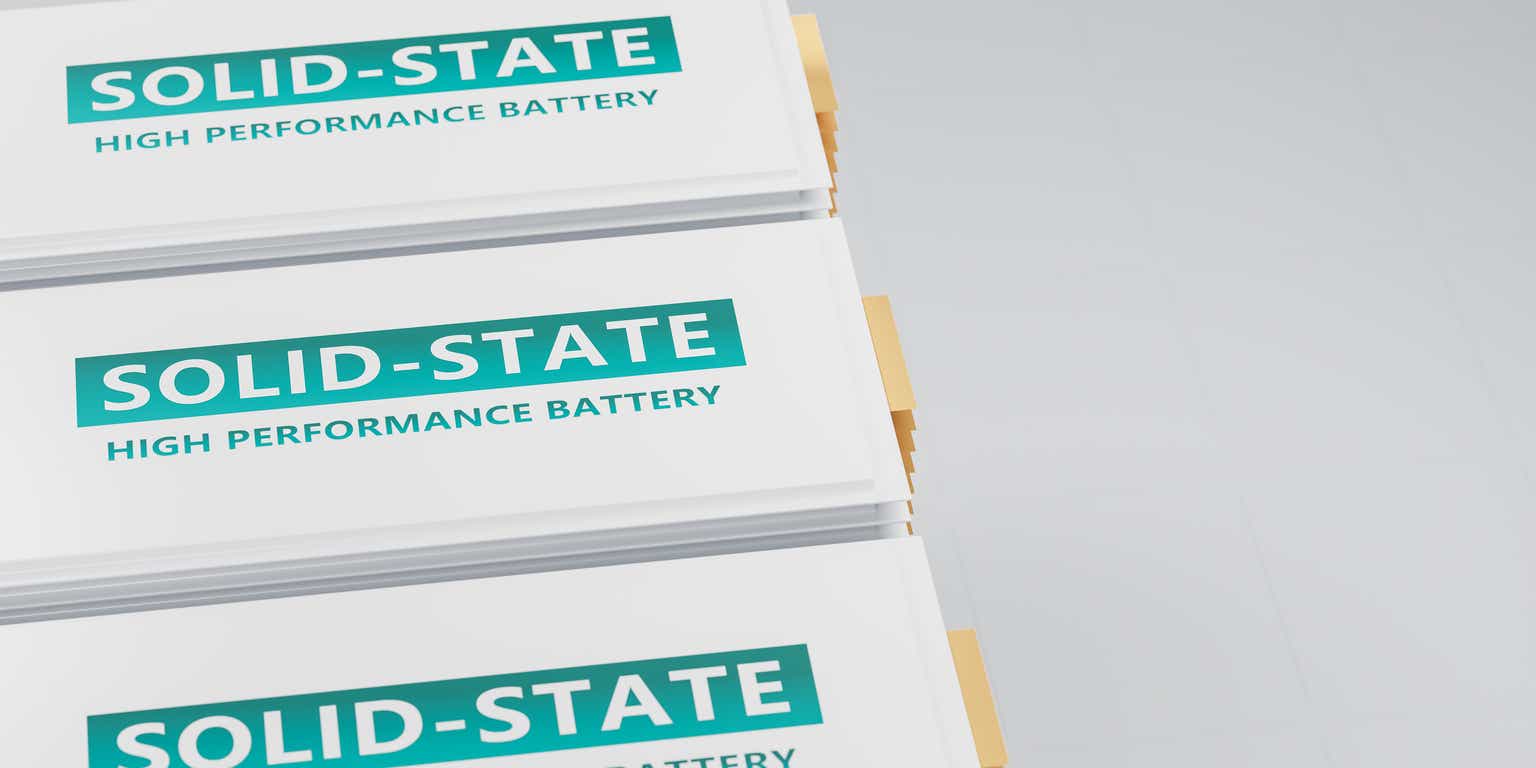
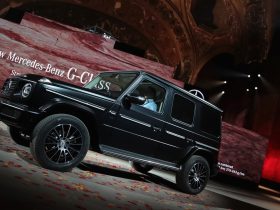


Leave a Reply